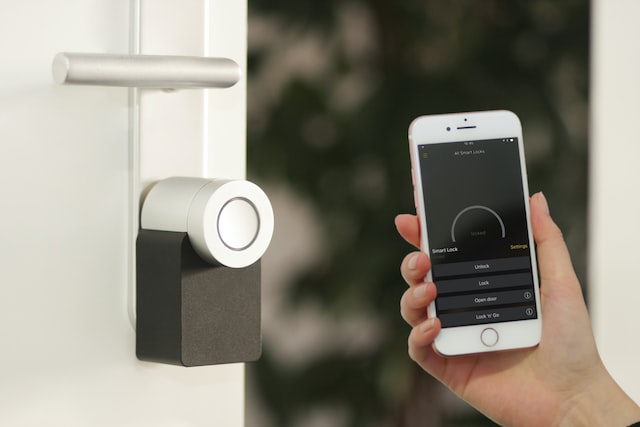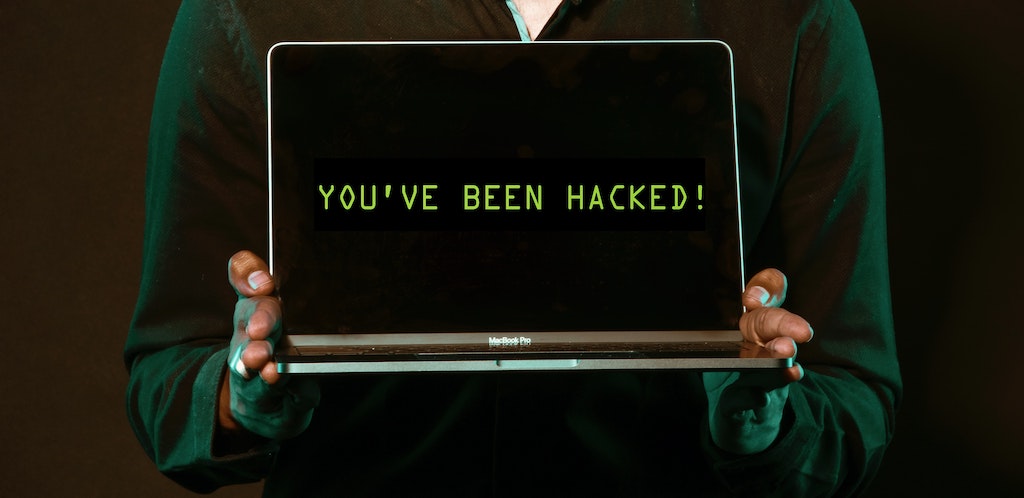Smart technology has come a long way since it was first introduced in the 2000s, but that doesn’t mean it has lost any of its complexity. Today’s homeowners still have many of the same questions they’ve always had. How do I decide which smart devices I need vs. which are a waste of money? What type of setup do I need to monitor a vacant home? How do I protect and maintain my smart home devices?
In an era of technological advancements, securing your home has become more sophisticated than ever. With the integration of smart devices, homeowners now have many options to bolster their security measures. Experts unanimously agree that the strategic use of these devices can significantly enhance the safety of your home. Here’s a comprehensive guide to smart devices for home security, curated by the experts.
- Smart cameras: Eyes on every angle Installing smart cameras is a fundamental step in fortifying your home security. Experts recommend placing these cameras at key entry points and vulnerable areas to monitor and record activities. High-resolution cameras with night vision capabilities provide continuous surveillance, allowing homeowners to monitor their property through smartphone apps remotely. This visual evidence can be crucial in identifying potential threats and assisting law enforcement if needed.
- Smart doorbell cameras: A modern guardian at your doorstep A smart doorbell camera serves as a virtual peephole, enabling you to see and communicate with visitors at your doorstep from anywhere in the world. Experts advocate for models with motion detection, two-way audio, and video recording features. Some even integrate facial recognition technology, adding an extra layer of security by allowing you to identify familiar faces and detect suspicious individuals.
- Smart locks: Reinforcing access control Traditional locks are evolving into smart locks, offering advanced features such as keyless entry, remote access, and activity logs. Experts recommend smart locks that can be integrated with other home security systems for seamless control. These locks provide homeowners with the ability to grant access to trusted individuals remotely, monitor who enters and exits, and receive instant alerts in case of unauthorized access attempts.
- Smart sensors and alarms: Proactive security measures Smart sensors play a pivotal role in alerting homeowners to potential threats. Window and door sensors, coupled with motion detectors, trigger alarms and notifications when unusual activity is detected. Experts emphasize the importance of integrating these sensors with a central hub or a security system to ensure a coordinated response, such as alerting the authorities or activating additional security measures.
- Smart lighting: Deterrence through illumination Illuminating your property strategically is a simple yet effective security measure. Smart lighting systems, equipped with motion sensors and automation capabilities, can simulate occupancy when you’re away. Experts recommend configuring these systems to mimic your daily routines, deterring potential intruders by creating the illusion that someone is home.
- Security system integration: The power of cohesion To maximize the effectiveness of smart devices, experts advise homeowners to invest in a comprehensive security system that integrates all components seamlessly. A centralized hub allows for unified control and monitoring, ensuring that devices work in harmony to provide a robust security network.
We’ve asked the experts to share everything we need to know about how and why to use smart technology to secure your home, plus tips for keeping it physically and technologically safe.
Benefits of using smart technology to secure the home
What are some real and true benefits of securing your home with technology besides making it safe?
1. Convenience: Smart home technology allows you to control and monitor your home from anywhere with an internet connection, making it convenient and easy to use.
2. Energy efficiency: You can automate your lights, thermostat, and appliances, leading to improved energy efficiency and lower energy bills.
3. Improved home value: Installing smart home technology can increase the value of your home, making it more attractive to potential buyers.
4. Increased comfort: With smart home technology, you can control your home’s temperature, lighting, and other systems to create a more comfortable living environment.
5. Enhanced peace of mind: Smart home technology can provide peace of mind by allowing you to monitor your home remotely and receive alerts for any security breaches.
6. Integration: Many smart home devices can be integrated to work together, allowing for a seamless and unified experience.
Nwoha Angel at Avotec
Do smart devices really make your house safer? Why?
Smart devices definitely make your home safer. From CCTV cameras and doorbell cameras to motion detectors and smart locks, there are a variety of options to choose from. For instance, a home security system such as a CCTV camera or a doorbell camera can be a great deterrent to burglars as it allows you to monitor your house remotely. With motion detectors placed around the house, you can be alerted to any suspicious activity, along with Smart locks that allow you to remotely lock and unlock your doors.
Smart devices also help reduce risk from natural events such as a fire or floods. Smart smoke detectors can send you alerts on your mobile phone if there is smoke detected in your home. Overall, smart devices provide an extra layer of security, allow you to monitor your home remotely, and alert you to any potential hazards. In addition, a unified platform like Aura, can allow you to effortlessly add and monitor any device. A platform lets you create scenarios using different devices, say for example, a motion sensor can trigger the security alarm or alert the authorities.
Anupama D. Verma at Aura
How can Smart Security System devices allow your home to be more secure?
A smart security system incorporates a range of intelligent solutions to monitor, alert, and mitigate detected threats. System design is scalable based on the homeowner’s unique concerns and their home’s access points but often employs a mix of security cameras, doorbell cameras, and sensors unified by a central hub. Thanks to recent advancements in context awareness and high-quality video surveillance, today’s security systems can deliver advanced, accurate protection against a range of threats, from break-ins and burglaries to the detection presence of fire or water.
Leading smart security systems offer flexible yet comprehensive control and monitoring options. Users can receive real-time alerts and insights into home security via a smartphone app or integrate their system with third-party smart home devices and voice assistants to streamline management. When users are out of the home or an urgent threat is detected, systems can also automatically alert the proper emergency response service. Or, for 24/7 peace of mind, users can opt for a professional monitoring service.
Chris Carney, CEO and Founder, abode Systems
What exciting new features are consumers looking for in a smart lock?
Globally, customers are getting more and more tech-savvy. With that comes the expectation and demand for new features and expanded capabilities. When it comes to electronic locks and smart, connected locks, biometrics, and real-time video capabilities are two major features end-users are looking for. In addition to keeping their home secure, customers are looking for a lock solution that is capable of keeping pace with the rest of the technology going into their homes. This need has been propelled by the expansion of smart home adoption on a global scale. As adoption rises, so too does innovation and demand for cutting-edge solutions.
The integration of biometrics into a door lock enables fast, easy, and personalized unlocking and access for customers. Kaadas, for example, offers a solution capable of touch and unlock in as little as 0.3 seconds and supports up to 50 fingerprints for access management. As video doorbells have grown in popularity, customers are now used to being able to see who is at their front door. This makes the integration of real-time video capabilities built directly into the door lock a logical evolution and feature customers will begin to expect in their next locking solutions.
Nick English, CEO North America, Kaadas
Do Smart devices increase your utility bill?
Smart devices do not increase utility costs. On the contrary, they provide savings. You only consume when you must, and you consume just enough, reducing a lot of wastage and save on cost, and consequently save the planet.
Eric Sambu, Managing Director at SGA Security
What is the difference between a door lock and a door strike?
A smart lock and a smart door strike are both excellent ways for homeowners to enjoy complete control over their home security. While both offer security, remote access control, and broader smart home system integration, the two differ greatly in installation and overall functionality.
A smart door strike, like the DEN SmartStrike™ is installed directly in the door frame. This discreet design provides all the benefits of a smart lock while simultaneously enabling homeowners to keep their existing door hardware while upgrading to a smart access control solution that can be managed through a convenient app. In addition, homeowners can create digital keys for family members, friends, and temporary guests. Smart door strikes are a great solution for homeowners who prefer an option that does not interfere with the aesthetics or design of their doors and who still want the option of being able to lock and unlock their doors with a traditional key. A smart door strike provides the best of both worlds for access control.
Marijn van der Wal, Founder, DEN Smart Home
Tips you should consider when using smart devices at home
Do you need to hire a professional to install the security cameras, or could you do it yourself?
Most homeowners or handymen possess the expertise to install a security camera system without professional help. The installation consists of pulling one network cable from the video recorder to each camera location. This single cable powers the camera and transmits video to the video recorder. All the installer needs to do is mount the camera(s), connect the cable, and turn the system on.
Where the user usually needs help is after the installation, during startup, and programming. This is where the expertise of a factory support representative carries great value. A system can be installed correctly, but if the user does not have access to knowledgeable support for set-up and programming, there is a very good chance the system will never operate at its full potential. Whether you choose to install a system yourself or have it installed, make sure you choose a supplier who provides unlimited user support and, most importantly, provides phone support for system configuration and customization of the systems operation.
Scott McQuarrie, Security Consultant at Backstreet Surveillance
Why is device interoperability an important aspect to consider when selecting smart home devices?
“Interoperability” is at the core of what every smart home device user wants. Consumers expect their devices to work with one another; however, anyone who has tried to navigate the smart home landscape lately understands that goal isn’t always simple. The smart home market has been faced with challenges in terms of compatibility between devices. Walled gardens, branded ecosystems, competing platforms, and the fight for user data has stunted the full potential of the smart home.
There is light at the end of this tunnel. For the past two decades, the Z-Wave Alliance has been a champion of device interoperability, ensuring that all 4,100+ Z-Wave devices on the market today have been certified to have backwards and forwards compatibility. Any generation of Z-Wave device is certified to work together, giving consumers the power of choice. Recently, consumers may have been seeing news about Matter as it has some big players involved, like Apple, Google, and Amazon. With this introduction, we enter a promising phase for manufacturers of smart home devices. For the full promise of the interoperable smart home to be realized, bridging solutions that enable established, legacy ecosystems – like Z-Wave – to work with new devices will be the key to unlocking to full potential of the smart home.
Mitch Klein, Executive Director, Z-Wave Alliance
What are some easy tips to keep hackers from hacking your smart devices?
Here are some easy tips to help protect your smart devices from being hacked:
- Use strong and unique passwords: Use strong, unique passwords for your Wi-Fi network and any online accounts associated with your smart devices. Consider using a password manager to help generate and store strong passwords. Instead, use a mix of upper and lower case letters, numbers, and special characters.
- Keep your devices up to date: Regularly update their firmware to keep up with any security vulnerabilities that are addressed by the manufacturer.
- Use two-factor authentication: Enable two-factor authentication (2FA) on your accounts whenever possible. This adds an extra layer of security by requiring an additional form of authentication beyond your password.
- Practicing good cyber hygiene is important in securing your smart devices. Be cautious of suspicious links and attachments you receive in emails or mobile texts. Be careful when clicking on links or opening email attachments, especially if they are from unknown sources. They could contain malware that can infect your phone and other devices on the network.
- Use a network firewall: Consider using a firewall to protect your home network and connected devices. A firewall can block unauthorized access to your network and protect your devices from incoming threats.
- If possible, use a separate WiFi network for smart devices in your home to isolate them from your personal computers, tablets, and smartphones. Network isolation helps any possible malware from spreading from your smart devices to your personal computing devices.
- Regularly review device activity: Regularly review the activity logs on your smart devices to look for any suspicious activity, such as unknown devices or unexpected login attempts.
- Use antivirus software on your computers and mobile devices. This can help detect and remove malware from your personal devices, and thwart it from infecting other smart devices in your home network.
Ray Ansari, Tech Specialist at CCTV Camera World
Tip No. 1: Change passwords
A smart home consists of many different devices. While most devices are protected by default credentials, but far too often these are easy to guess. This is the equivalent of an open front door for attackers. Hence, the first thing you should do when setting up a smart device is to change the password.
Tip No. 2: Keep your software updated
Every software has bugs, and sometimes these bugs can be used to take over control of the devices running that software. Luckily most serious vendors have processes to identify those vulnerabilities and regular send updates to their devices. Make sure to check for those updates regularly and implement them.
Tip No. 3: Split networks
A successful attack to one of your devices is less damaging if that device is not in the same network as your work laptop. This sounds complicated, but in most cases it is not. Most routers even come with a default guest network – devices in this network cannot access the home network, but are connected to the Internet. Use these additional networks for your smart devices.
Patrick Boch at Cyberprotection Magazine
Does protecting your Wi-Fi make your smart devices safer? Why?
Protecting your Wi-Fi can make your smart devices safer! One of the first steps in making a safer network is to create a strong password and encryption key. This will make it harder for unwanted users to access your network and the devices connected to the Wi-Fi. It will help unauthorized individuals from gaining access to your devices and stealing your personal information, such as login credentials, financial data, or sensitive personal information. Protecting your Wi-Fi network can help prevent other security risks, and you can control who has access to your devices and data and ensure that only trusted devices and users are allowed on your network. Strong Wi-Fi networks will help your smart devices from unauthorized access, data theft, and other security risks, making your smart devices more secure in everyday use.
Sandro Ferreira, BTA’s systems engineer, from Bocatech.com
Why is changing the passwords on your home devices necessary?
Changing your home device passwords regularly, or at least as frequently as you change your clocks or change your smoke detector batteries prevents unauthorized access by someone who may have obtained them via malicious websites or malware on your device. You will not know if it has been obtained, so being proactive is a good security practice. Also, it keeps you in step with using proper password length and type versus a simple one you may already be using on the device and should change. Try changing your password to a passphrase for easier recall and higher complexity for hackers.
Fred Teacher at Get Me Coding
Your home is getting smarter, but so are cybercriminals. They no longer need to break your locks to gain access to what matters most. All they need is a small amount of personal information that is often on display in plain sight. Alarmingly, most people do not regularly change their passwords, despite most breaches resulting from password compromise. Yes, it’s a tedious exercise, but changing your passwords can protect you and your loved ones from identity theft, financial fraud, and emotional distress. Your data is just as valuable as the items in your home, so don’t leave the door unlocked for cybercriminals.
Stuart Crowley, editor at Techerati.
Changing passwords on your home devices is important for several reasons. First and foremost, it helps protect your personal information and sensitive data from unauthorized access. Passwords are the first line of defense against hackers, and if your devices have weak or easily guessable passwords, your personal information could be at risk.
Additionally, changing passwords regularly can help prevent potential security breaches. Hackers often use automated tools to try and crack passwords, so changing your passwords frequently can make it more difficult for them to gain access to your devices and information.
Furthermore, if you use the same password for multiple accounts, changing it on one device can help protect all of your accounts. If one account is compromised, a hacker could potentially gain access to all of your other accounts with the same password.”
Please let me know if you need any additional information from me.
Camille Moore, Creative Content Writer at RealManage

What are the essential smart devices for enhancing home security, and how do they contribute to overall safety?
Integrating new smart home devices into your security system can significantly enhance safety and convenience. Key devices include smart locks, which allow keyless entry and remote access, ensuring you can control who enters your home even when you’re away. Video doorbells provide real-time front door monitoring, deterring potential intruders by capturing video footage and sending alerts to your smartphone when someone approaches. Smart cameras and motion detectors can cover vulnerable areas, instantly alerting you to suspicious activity.
Smart smoke detectors and flood sensors add another layer of protection by notifying you of environmental hazards. Integrating these devices into a unified system allows for seamless automation, where, for instance, a motion sensor can trigger an alarm or alert authorities. Overall, these smart devices enhance security and offer peace of mind by allowing homeowners to monitor their property remotely.
Gearbrain.com
Securing your home with smart devices is a proactive and modern approach endorsed by security experts. By strategically implementing these devices, homeowners can not only deter potential threats but also enhance their ability to respond swiftly and effectively in case of emergencies. Embrace the future of home security and take advantage of the latest technological innovations to safeguard what matters most – your home and loved ones.



